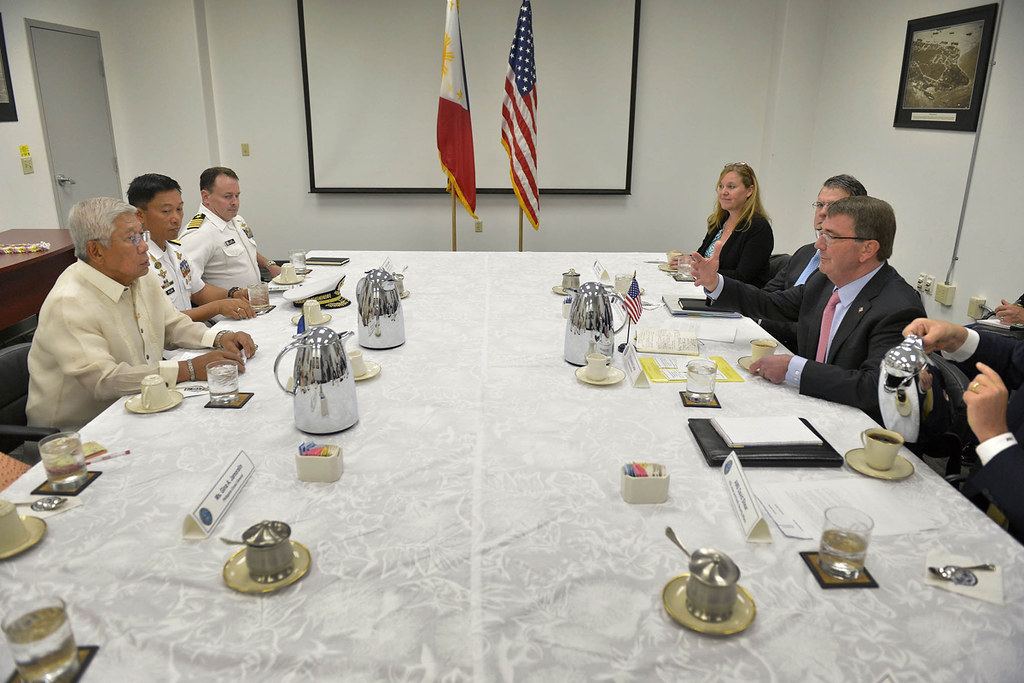Context:
The Philippines rejects China’s demand to remove the Sierra Madre ship from the Spratly Islands, citing territorial claims.
More on the News
- Sierra Madre, a World War II-era ship, was left on the Second Thomas Shoal in the Spratly Islands in 1999 by the Philippines.
- Second Thomas Shoal is a submerged reef located in the Spratly Islands of the South China Sea. The Philippines first took possession of the feature in 1999.
- Sierra Madre’s presence in disputed waters serves as a symbol of sovereignty and strategic control, adding complexity to the disputes in the region.
- Tensions in the South China Sea escalate, involving competing claims among China, Philippines, Malaysia, Vietnam, and Brunei Darussalam.
- Countries claim ownership over islands based on exclusive economic zones (EEZs) and marine resources, extending 200 nautical miles from their coastlines.
- Tension escalated, under the former Philippine President, and reached a peak in 2012 when China effectively took control of the Scarborough Shoal after a standoff.
- China’s hardened stance, under President Xi Jinping, claimed approximately 90% of the South China Sea.
- In 2016, an international tribunal in the Hague ruled in favor of the Philippines, highlighting China’s environmental harm and artificial island construction, were incompatible with internationl law.
US Response:
- US supports the Philippines as a strategic ally and reaffirms defence commitments.
- In May 2023, the two nations revised guidelines for their 1951 U.S.-Philippines Mutual Defense Treaty.
- The original treaty acknowledged that an armed attack in the Pacific Area on either of the Parties would be dangerous to its peace and safety and each party agreed that it would act to meet the common dangers in accordance with its constitutional processes.
- A recent meeting between Marcos Jr and US President Joe Biden reaffirms that the US support the Philippines against any form of coercion.
About the Sierra Madre
- The Sierra Madre, a 100 ft-long landing ship, was built in the US during World War II (1939-45) and commissioned in 1944.
- It was later deployed to Vietnam during the US involvement in the Vietnam War (1954-75) and was eventually transferred to the Philippines, a US ally, in 1976.
- In 1999, it was left on the Second Thomas Shoal, which is a part of the mostly uninhabited Spratly Islands.
- The move was an attempt to halt further Chinese assertions after China had laid claims on the nearby Mischief Reef a few years prior.
Sierra Madre Significance:
- Placement by the Philippines to strengthen territorial claims.
- Used for repairs and resupply missions, subject to Chinese interference.
- Removal risks weakening the Philippines’ claims and Chinese establishment.
Spratly Islands
- The Spratly Islands, a scattering of over 700 reefs and islands in the South China Sea, are a geopolitical flashpoint.
- Their strategic location and potential resource wealth fuel competing claims by China, Vietnam, Taiwan, Philippines, Malaysia, and Brunei.
- China’s expansive Nine-Dash Line claim over the South China Sea, including the Spratlys, clashes with other nations’ assertions. This unresolved dispute impacts regional stability, freedom of navigation, and India’s Indo-Pacific interests.


